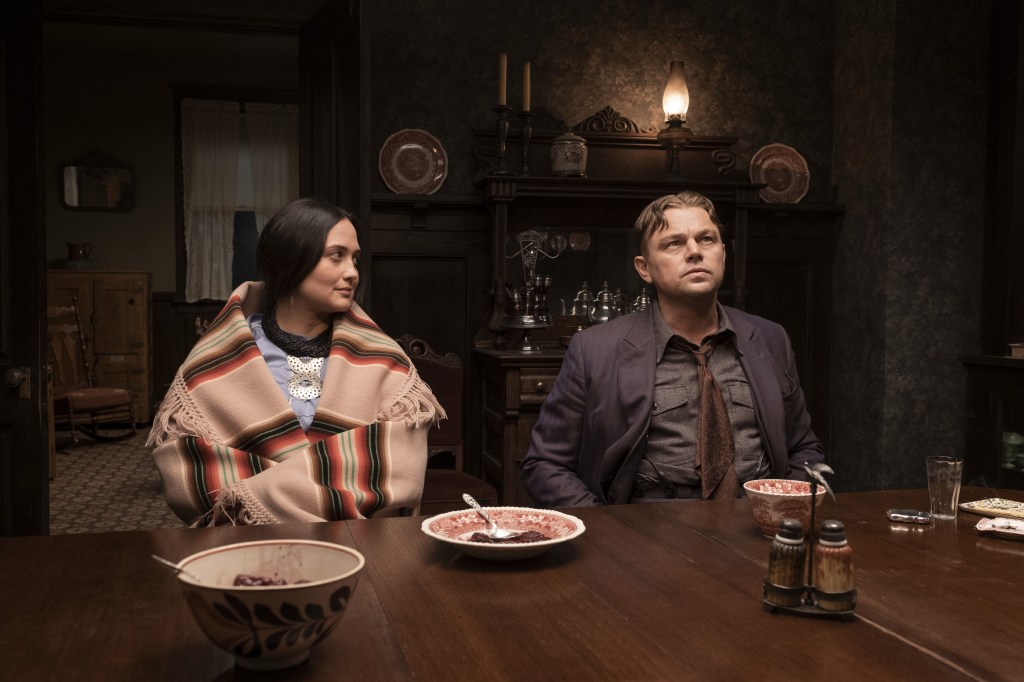So, Martin Scorsese’s Killers of the Flower Moon is really, really good. At 3+ hours, I expected a slog and figured I’d drift in and out of consciousness during my 7 p.m. IMAX showing. Instead, I was riveted from start to finish, captivated by this sad, strange, true-life drama, the incredible acting from Leonardo DiCaprio, Robert DeNiro, and Lily Gladstone, and Scorsese’s impeccable direction. Yes, it’s long, but, like Christopher Nolan’s Oppenheimer, the material justifies the lengthy runtime. I didn’t want it to end.
Of course, we must now ask: where does Killers rank in Scorsese’s vast filmography? That’s a tough one. The man has made so many incredible motion pictures, including a handful of outright classics — like, Greatest Films of All Time classics — that it’s hard to make such a critical determination based on one viewing.
Regardless, I’ll give it a shot.
The Top Five
My top five favorite Scorsese movies are, in order, Goodfellas, Raging Bull, The Wolf of Wall Street, Casino, and The Departed. The famed director’s talents are best showcased in crime dramas, where he can apply his oft-used rags-to-riches-to-rags template to great effect. Goodfellas, Casino, and Wolf of Wall Street are undeniably entertaining pictures — darkly funny, satirical, and visually sumptuous — that take a third-act turn when the good times come back to bite everyone in the ass. That’s an oversimplification, of course, but these entries are ripe with moral quandaries, which fascinates me. How far will Jake LaMotta fall? How far into the fire will Henry Hill (Ray Liotta) travel before he realizes his predicament?
Scorsese makes powerful morality tales that resonate with the viewer. He doesn’t judge the actions of his characters but shows us how and why they chose their crime-riddled path and asks if the ends justified the means. Who wouldn’t want a piece of Jordan Belfort’s lifestyle — the holy trifecta of women, money, and power? Who doesn’t crave the celebrity status afforded to Sam “Ace” Rothstein (DeNiro)? Hell, I would rather slip into the shoes of Colin Sullivan (Matt Damon) than William Costigan Jr. (DiCaprio), even if my actions ultimately resulted in overwhelming guilt.
The vast mansions and nonstop stream of money, sex, and power eventually fall to shambles, but no one involved seems to regret their poor decisions. In fact, they lament having to abandon their problematic lifestyles and only run away when their backs are completely against the wall.
I love this stuff.
The Top 10
After the initial five, I’d place the likes of Taxi Driver, Mean Streets, Gangs of New York, Bringing Out the Dead, and Cape Fear, all wholly entertaining pictures worthy of a Top 5 spot. Bringing Out the Dead, specifically, remains Scorsese’s most underrated flick, a relentless, violent drama crackling with energy and bursting with style. Gangs of New York has aged well but benefits mostly from Daniel Day Lewis’ astonishing performance, while Cape Fear, Mean Streets, and Taxi Driver would likely stand as personal bests for anyone other than Scorsese.
The Rest
After the Top 10, Scorsese’s work becomes a little more scattershot. A lot of people love Silence, The Age of Innocence, and The Last Temptation of Christ, and those pictures are undoubtedly worthy of praise, but they’re not exactly rewatchable in the same vein as Goodfellas or The Departed — ditto with Shutter Island, Kundun, and The Aviator. The Irishman is a little harder to gauge. I liked it when I watched it, but I haven’t wanted to see it again. Hugo, The Color of Money, Alice Doesn’t Live Here Anymore, New York, New York, After Hours, and The King of Comedy round out the list, and, again, are worthy of critical praise but fall short of the filmmaker’s incredibly high bar.
None are bad — just not on the same level as Goodfellas.
Killers of the Flower Moon
Where does that leave Killers of the Flower Moon? Well, the drama follows the same template as Goodfellas and Casino — the rags-to-riches-to-rags storyline — but spends more time showing the ramifications of crimes committed by its central characters than their glamorous lifestyle. We spend nearly three hours watching Ernest Buckhart (DiCaprio) slowly poison his wife (Gladstone) and witness a handful of ghastly murders aimed at innocent civilians. Goodfellas and Casino were easier to stomach because the violence was primarily criminal-on-criminal. Here, bad guys kill people (mostly women) to attain money. There’s a scene where a man shoots a mother after she places her baby in a carriage and another where a family is murdered in an explosion.
Moreover, the criminals don’t pay for their sins. Many head to jail but are released after only a few years. Why? Because their victims were members of the Osage Native American tribe. Scorsese doesn’t make any overarching social statement, but he presents the facts and then asks us to ponder how such horrors took place so far under the radar, lost in the annals of American history. As such, there’s more of an emotional undercurrent not typically present in Scorsese’s pictures. This one hits harder, but it’s also tough to watch.
Though, weirdly, this is something I will likely watch multiple times over. This is one of those motion picture experiences that raises fascinating discussions and leads to a desire for a greater understanding of its subject matter — kind of like Oppenheimer.
I can’t rightly squeeze Killers of the Flower Moon into the Top 5 without more viewings, but I feel comfortable placing inside the Top 10. Does it bump out Gangs of New York or Cape Fear? Time will tell, but I think Killers of the Flower Moon will rise through the ranks and be talked about as one of Scorsese’s most outstanding achievements.










